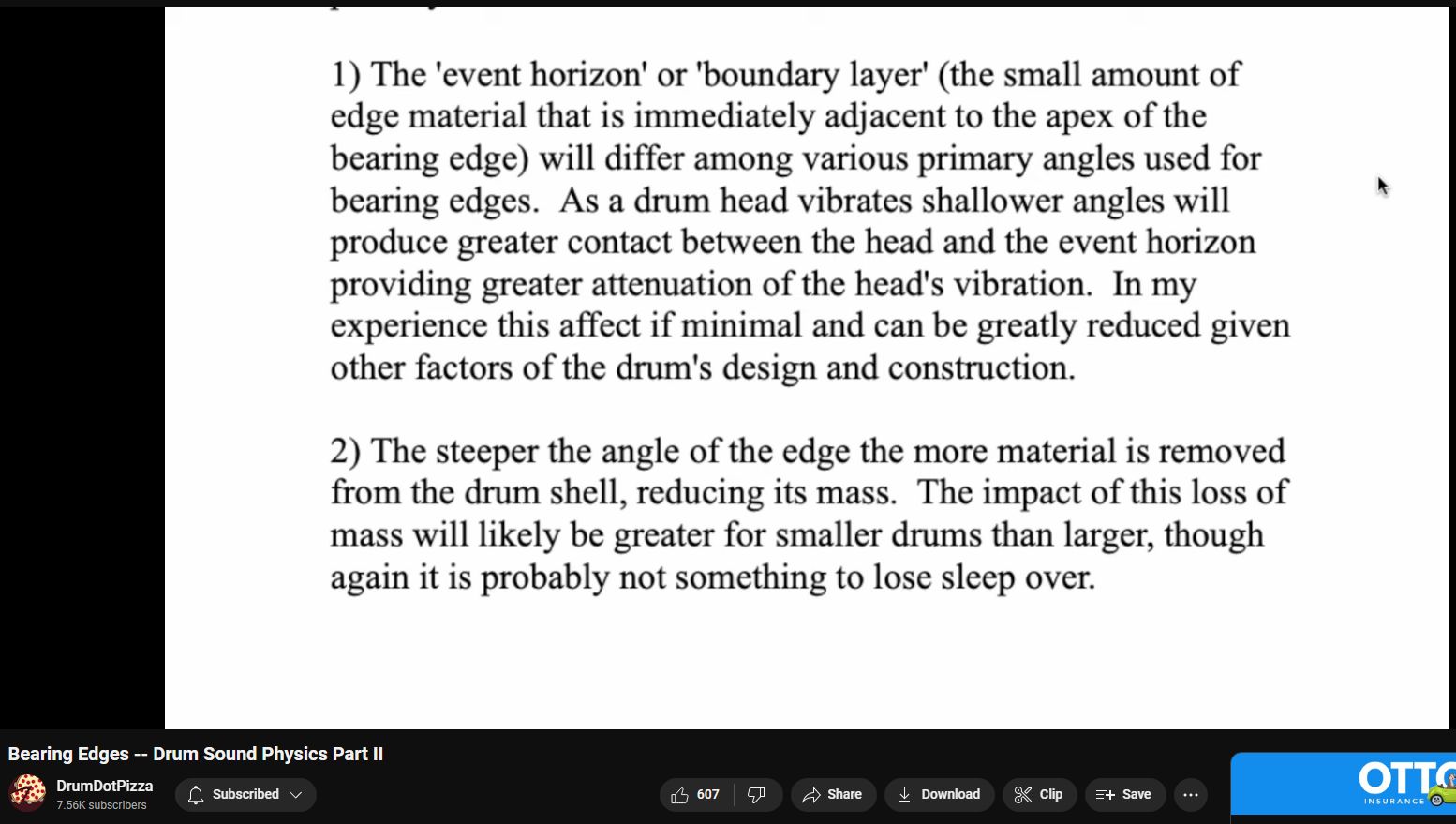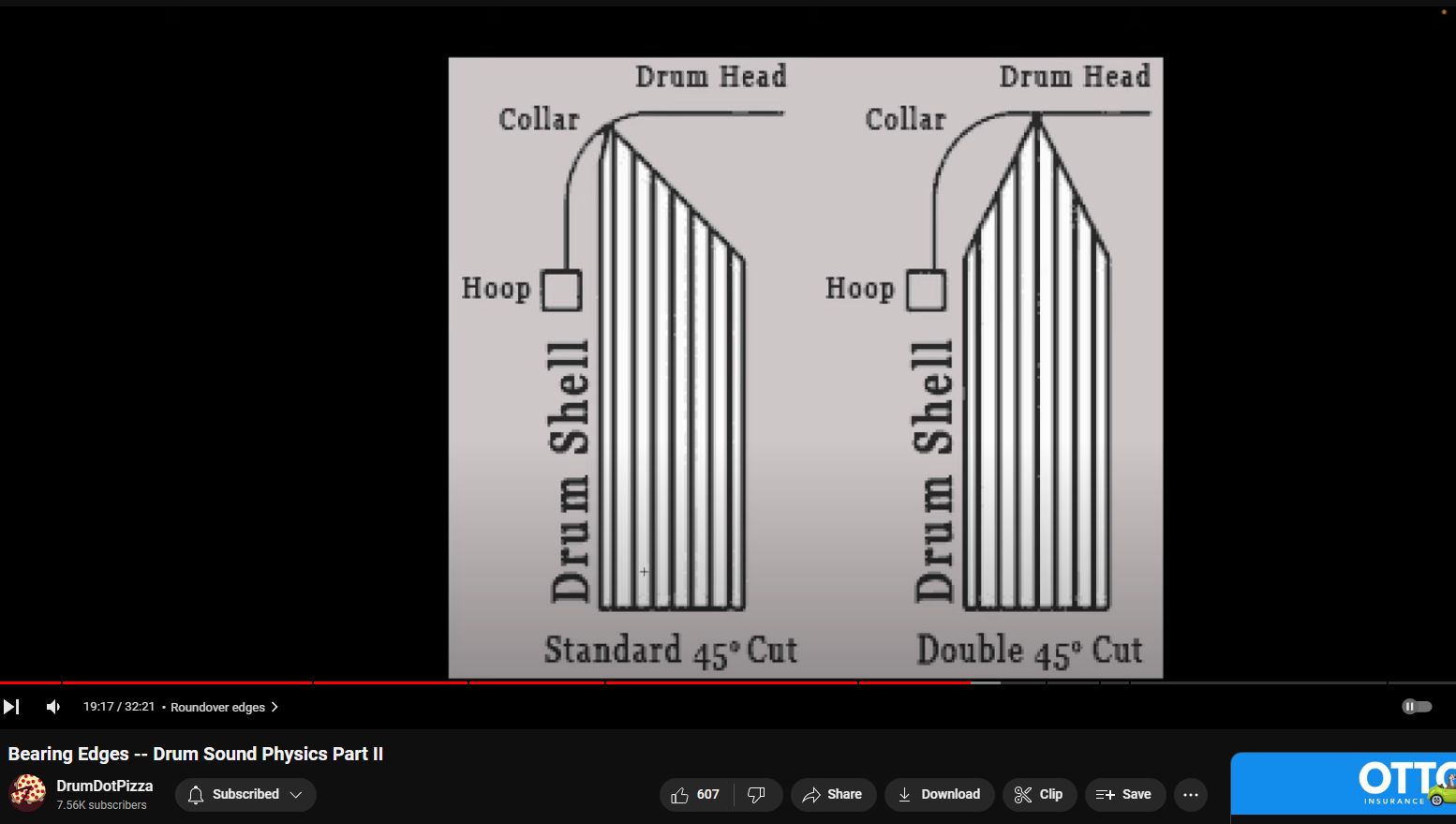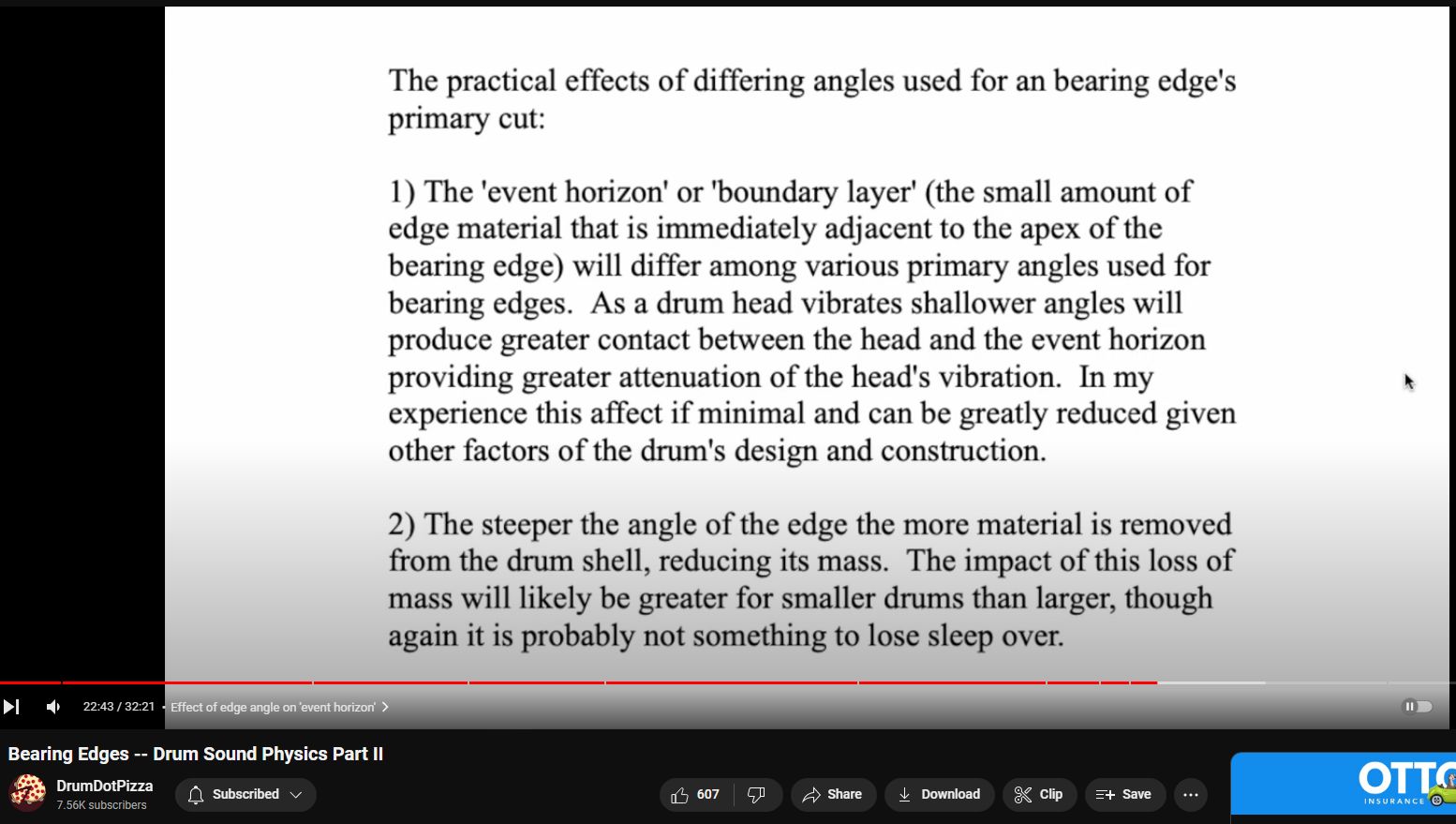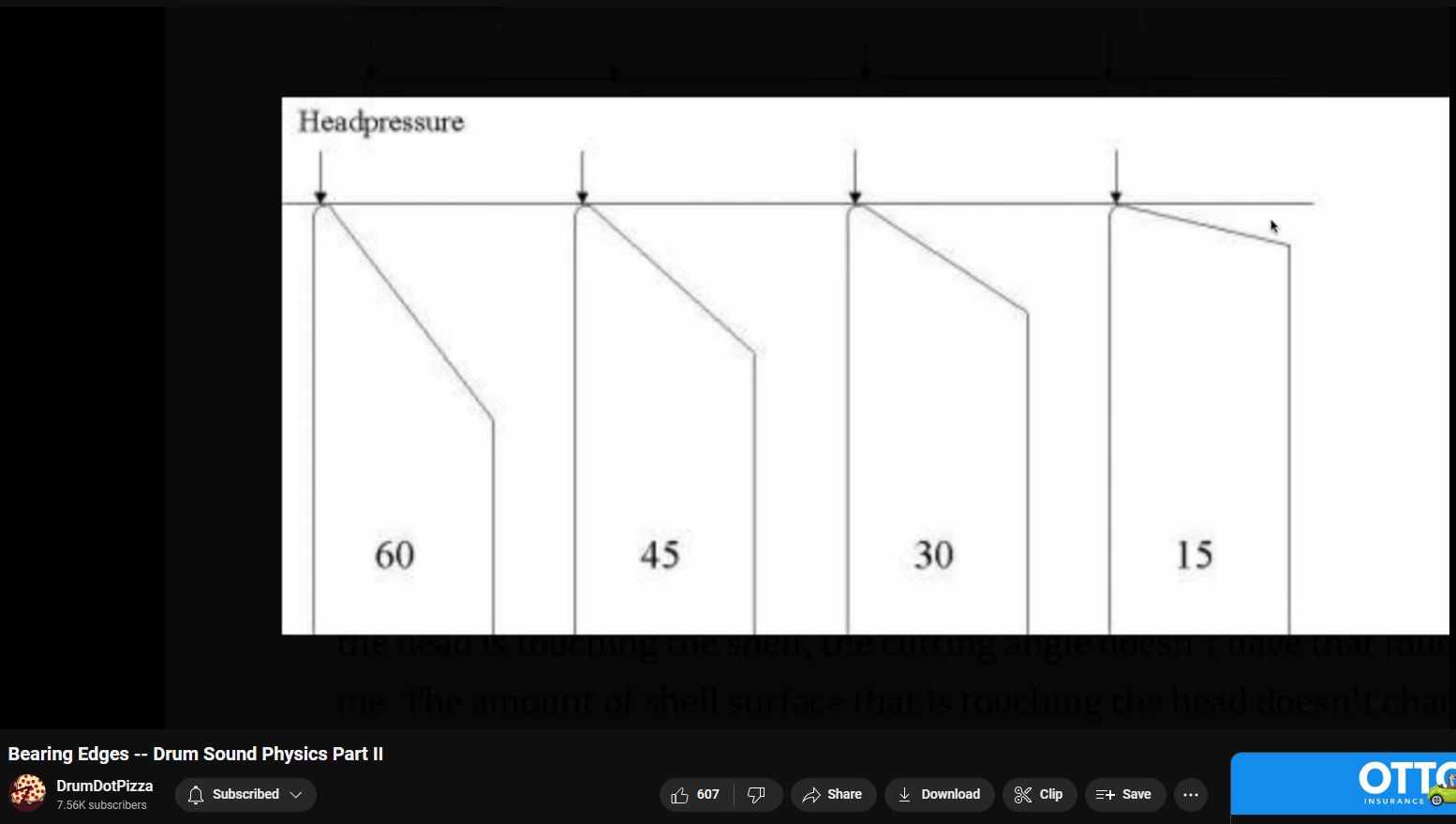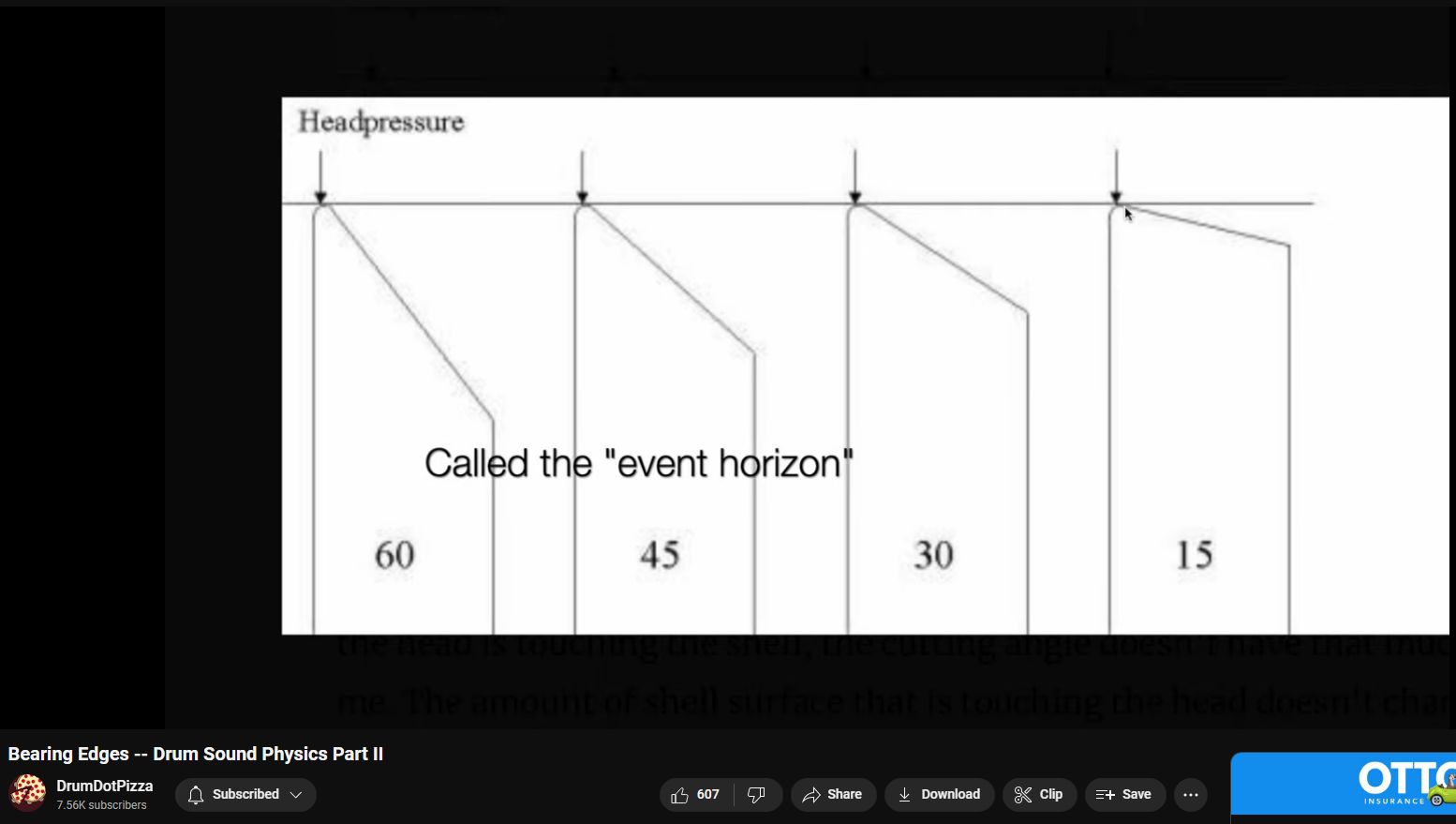Bearing Edges — Drum Sound Physics Part II
The bearing edges of a drum refer to the outer edge where the drumhead comes into contact with the drum shell. The shape and construction of these edges play a crucial role in determining the overall sound and character of the drum. Here’s how bearing edges can affect the sound of a drum:
- Sharpness or Roundness: Bearing edges can be cut to various profiles, ranging from sharp or pointed edges to rounded edges. Sharper edges tend to produce more attack and focus in the sound, with enhanced stick definition and projection. On the other hand, rounded edges result in a warmer, more rounded tone with a smoother decay.
- Contact Surface: The width of the contact surface between the drumhead and the bearing edge can impact the drum’s tone. Wider contact surfaces provide more surface area for the drumhead to vibrate against, resulting in a fuller, more resonant sound. Conversely, narrower contact surfaces may yield a tighter, more controlled sound.
- Material and Thickness: The material and thickness of the drum shell can influence the way the bearing edge interacts with the drumhead. Different materials, such as wood or metal, have distinct tonal characteristics, and the thickness of the shell can affect resonance and sustain.
- Consistency and Precision: The consistency and precision of the bearing edges’ construction are essential for ensuring uniform contact between the drumhead and the shell. Irregularities or inconsistencies in the bearing edges can cause uneven tension on the drumhead, leading to tuning issues and unpredictable sound quality.
- Resonance and Sustain: Well-crafted bearing edges contribute to the drum’s overall resonance and sustain. Properly shaped and smooth bearing edges allow the drumhead to vibrate freely, maximizing the drum’s tonal potential and sustain.
- Tuning Stability: The quality of the bearing edges can also affect the drum’s tuning stability. Smooth, even bearing edges provide better seating for the drumhead and hardware, helping to maintain consistent tuning over time.
In summary, the bearing edges of a drum significantly influence its sound characteristics, including tone, attack, resonance, and tuning stability. Drum manufacturers and custom drum builders often experiment with different bearing edge profiles to achieve specific sonic qualities and cater to the preferences of drummers across various musical styles.
